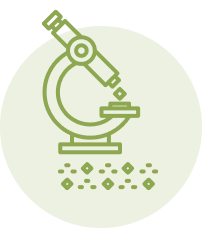What is Aeration?
Aeration is a means of creating air channels within soil, allowing for easier movement of water, roots, and nutrients. Often overlooked, aeration is a valuable tool in maintaining a healthy lawn. If your soil is compacted, it is difficult for water to infiltrate into the soil and for roots to grow in the soil. This stresses turf and makes nutrient loss and erosion through runoff more likely. By aerating a lawn, you help to reduce compaction, improve water infiltration, and improve grass growth
Who should Aerate?
Not everyone needs to aerate their lawns. Here are some situations that would call for aeration:
- Your lawn is the neighborhood playground. If your lawn gets a lot of pounding, by running feet of the human or animal type, then the ground is getting compacted. Similarly, compacted soil is also a result of having heavy objects sit in one area for long periods of time, such as a pool or sandbox.
- Your grass was laid down as sod. Soil layering occurs when different types of earth are layered without mixing, as when rolls of sod are laid down over an existing flat dirt surface. In this case, a barrier naturally develops between the different types of soil, especially if the sod is made with finer-grained sand than the coarser dirt underneath. The finer-grained sand will hold the water, and roots won’t want to sink into the coarser soil and leave their water source behind. Eventually, this can lead to a mat of roots that have no soil left to feed upon and the grass will die off.
- Your lawn was laid down when a new home was constructed. New home construction often strips or buries the existing topsoil, and all that’s left for the grass roots to sink into is compacted subsoil that holds fewer nutrients—the worst possible combination of items 1 and 2 above.
- Your grass dries out easily and feels springy to the touch. If this is the case, you might have too much “thatch,” which is a layer of dead grass that can build up between the soil surface and the green grass blades. Thatch also gets compacted, like soil, and prevents water and nutrients from passing down to the roots of the grass.
How do you Aerate?
Tools
There are two types of tools used for aerating. The first is a spike aerator, which pokes holes in the ground. Sometimes people decide just to use a garden or spading fork for this. The disadvantage of aerating your lawn with spiked tools is that the spikes push the soil away from the hole, essentially creating tiny compacted areas around each spiked hole, defeating the purpose of the aeration.
The second type of tool is a plug aerator. This machine actually removes plugs, similar to core samples, from the turf, rather than compacting the soil, to create a passage through which air, water, and fertilizer can get to the roots of the grass. The plugs are dropped by the machine onto the surface of your lawn—we’ll talk about what to do with them in a moment.
Either type of aerating machine can be rented from a garden or home improvement store.
Method
Here are the steps to follow once you’ve made arrangements to rent an aerating machine:
- Water your lawn the day before. If the soil is too dry, it’s much more difficult to get the tines of the aerating machine into the soil.
- Aerate each area of the lawn multiple times, because most machines can’t fully aerate the lawn in a single pass.
- If you’ve used a plug aerator, allow the plugs to dry out, then break them up to allow the soil to sift back into the lawn. You can use the back of a shovel to break up the plugs, or chew them up with a lawn mower. If you use the lawn mower, however, you may need to sharpen its blades afterwards!
- Return to your regular schedule of watering, fertilizing, and mowing your lawn.
Products
A lesser-known, and perhaps easier way to aerate your lawn is by applying gypsum. Gypsum is a natural mineral that works to coagulate soil particles, effectively creating channels from within the soil structure. Earth Science’s Fast Acting Gypsum® is an effective aerating solution, and can be applied with a spreader, or by hand.
When should you Aerate?
It’s best to aerate during the growing season, so that the grass begins to repair itself immediately and fill in the spaces left over by the aeration. It will also give the grass its best chance to absorb the water and fertilizer that now easily flows to root level via those holes in the turf.
So shake up your lawn with some aeration this season and watch it thrive! For more information on Earth Science’s Fast Acting Gypsum®, or lawn aeration in general, contact us today!



